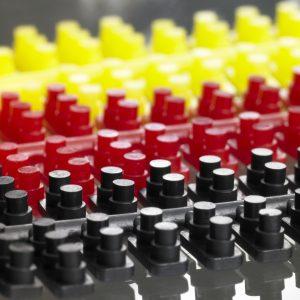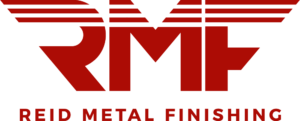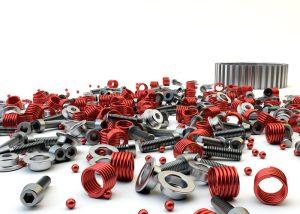An overview of Type III Anodizing
Hard-coat anodizing, often called Type III aluminum anodizing, depends on sulfuric acid and additional electrolytes to achieve premium wear-and-tear resistance. Performed at a lower temperature than other sulfuric acid anodizing treatments, Type III anodizing will give a surface with a Rockwell C-grade hardness rating of 60-70.
THE IMPORTANCE OF HARD-COAT ANODIZING
ASTM E-18 and ISO 6508-1 specify references and methods used to determine the ratings of various surfaces. For a rough comparison, hard steels used in kitchen knives have hardness ratings C (HRC) values of 50-70. On the lower end of the scale, the steels are softer, allowing easier sharpening but dulling faster for the same reason. Once we get into the 60s and low 70s, steels harden and retain an edge longer, albeit with more effort and skill required to sharpen a duller edge when it eventually wears down.
Now, this is steel, with a density of, on average, 7.87 g/cm3. By comparison, aluminum has only 2.7 g/cm3 density, only about a third as dense. For aluminum surfaces to acquire wear resistance and hardness comparable to quality steel without the associated weight is a boon to aerospace and firearms design, where excessive weight is strictly monitored. Reid Metal Finishing knows the priorities of military, aerospace, and firearm applications. We are happy to contribute hard-coat anodizing (and other services) that will add significant value to our customer’s products.
THE APPLICATIONS OF HARD-COAT ANODIZING
 Aside from military and aerospace applications, hard-coat anodizing can be a boon to medical manufacturers. Hospital equipment has two primary chemical irritants: potent cleaning agents to ensure sterility between patients and body fluids, some of which can have a surprisingly wide pH range. Additionally, repeated exposure to both chemical attacks will pit aluminum medical components. Aside from degraded performance, corroded aluminum equipment will form sneaky places for bacteria and chemical irritants to move throughout the hospital environment. Given this fact, hard-coat anodizing is a prudent and wise investment when putting the finishing touches on medical equipment.
Aside from military and aerospace applications, hard-coat anodizing can be a boon to medical manufacturers. Hospital equipment has two primary chemical irritants: potent cleaning agents to ensure sterility between patients and body fluids, some of which can have a surprisingly wide pH range. Additionally, repeated exposure to both chemical attacks will pit aluminum medical components. Aside from degraded performance, corroded aluminum equipment will form sneaky places for bacteria and chemical irritants to move throughout the hospital environment. Given this fact, hard-coat anodizing is a prudent and wise investment when putting the finishing touches on medical equipment.
Regardless of use, Type III anodizing deposits significantly thicker coats than other anodizing methods. Type III provides superior surface protection and is best for large, less intricate products. Other benefits of Type III anodizing include:
- excellent binding to adhesives
- electrical insulation
- exceptional corrosion and abrasion resistance
Not sure which treatment is right for your products?
To distinguish which anodizing treatment is needed, contact Reid Metal Finishing. Different environments entail varied mechanical and chemical stressors that require the proper treatment for your components to function optimally. Though all anodizing treatments generally increase corrosion and abrasion resistance, the extent and duration of such resistance will vary with the specific treatment in question. Hard-coat anodizing works with sulfuric acid and additional raw materials to provide an exceptionally thick and durable coating for heavy-duty components.

